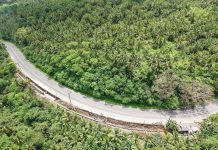TACLOBAN CITY – The Bureau of Fisheries and Aquatic Resources (BFAR) has enforced precautionary measures in Samar coastal waters after laboratory test results show that red tide presence has intensified in Irong-Irong Bay. The government strictly imposed shellfish ban in Irong-Irong Bay in Catbalogan City, Samar last week after both water and shellfish meat were tested positive of red tide toxins.
“We are worried that red tide toxins will spread to nearby Cambatutay Bay, Maqueda Bay, and Calbayog City waters. These areas have histories of red tide presence in the past,” said BFAR Regional Director Juan Albaladejo. Irong-Irong Bay, one of the collecting areas for mussel in Samar, drains its water to Cambatutay, a bay hit by red tide phenomenon last year. Cambatutay, which has been showing signs of red tide recurrence, in turn, drains to Calbayog Waters. BFAR detected cyst formation in nearby Maqueda Bay, an area known for commercial mussel production. “The presence of cyst indicates that red tide organisms may bloom anytime,” Albaladejo added.
“There’s a big possibility that we will issue a shellfish ban for Cambatutay Bay this week. Since last week, mussel traders in Maqueda Bay have been asked to secure health certificate from BFAR before shipping mussels to Davao and Mania as a precautionary measure,” Albaladejo said. Fishes caught in affected areas are safe for human consumption provided that they are fresh, washed and cooked thoroughly, the BFAR regional director said. From 1,120 cells per liter of toxins in water last week, the reading in Irong-Irong Bay rose to up to 2,074 cells per liter, way high than the 10 cells per liter of toxins in a normal situation.
Red tide was found in 117 micro grams of every 100 grams of shellfish meat, or nearly double than the 60 micro grams per 100 grams in normal level. “This is very alarming because when two persons in Cambatutay Bay died of toxins last year, the reading was only 20 micro grams per 100 grams of meat,” the BFAR official recalled.
Authorities test coastal waters in Samar twice a week to monitor the possible presence of red tide. “The prolong sunny weather since May followed by heavy downpour in the past few days may trigger red tide bloom due to discharge of waste water from mountains and residential areas,” he added.
Red tide is a term used to describe all phenomena which the water is discolored by high algal biomass or concentration of algae. The discoloration may not necessarily be red in color, but it may also appear yellow, brown, green, blue or milky, depending on the organisms involved. (SARWELL Q.MENIANO)



